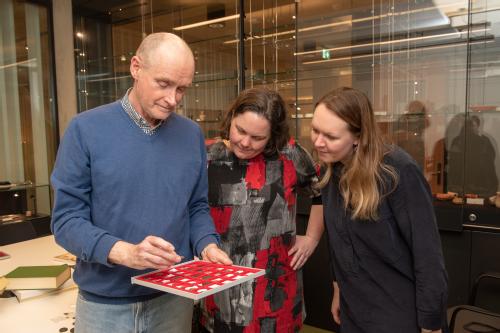Ancient Roman Money


The way ahead is making money talk in Ancient Rome.

Professor Kevin Butcher, Department of Classics & Ancient History, Warwick

In his 44BC work De Officiis, the Roman politician, philosopher and orator Cicero grumbled that in his living memory “…coinage was being tossed around, so that no one was able to know what he had”. For a long time, the senator’s claims of economic turbulence some 2100 years ago were unable to be wholly explained.
Fortunately, new archaeological and historical methods are allowing us to give tangible currency to issues like this, while more broadly providing a greater understanding of how coinage reflected the financial health of ancient Rome.
Ancient silver coinage formed the backbone of state finance in antiquity. The fineness and quality of a coinage is often taken by historians to be a comment on the fiscal health of the issuing state, yet very little is really known about its fineness and chemical composition, leaving historians guessing about financial strategies and sources of metals.
Back in the 1970s a researcher published a three-volume work that was regarded as the definitive statement on the quality of Roman silver coinage. This was used by historians to argue for a link between coin quality and the economic fortunes of the Roman Empire. But the analyses were inaccurate, because the samples for analysis had been taken from the surfaces, or from just beneath the surfaces, of the coins, and these are not representative of the original alloys used.

I realised that using a different approach to sampling could establish an accurate account of changes and debasements of Roman and other ancient coinages over time. Initially I thought the research would just refine our knowledge and give us a more detailed picture of the fundamentals of Roman monetary history. But it ended up re-writing the subject.
A pilot study we conducted in the 1990s demonstrated that we could isolate the products of different mints by their elemental signatures and that the fineness of the coins reported in the 1970s was too high; our results showed a much lower and more consistent level of fineness. This revelation led eventually to a series of projects, beginning nearly 20 years ago, covering the whole history of Roman silver coins, and leading to the current investigation, which is a five-year project funded by a European Research Council Advanced Grant.
Research projects of this kind are interdisciplinary, with our study bringing together specialists in ancient history; archaeometallurgy; and particle physics. Early on, I had the good fortune to meet an archaeometallurgist with an interest in coins who was pioneering a technique to obtain samples from the ‘heart metal’ of the coins by using a tiny drill to remove metal by drilling into the edge of the coin (so as to avoid damaging the surfaces with the designs). This unlocked a wide number of research opportunities.
The work is undeniably quite time-consuming, involving negotiations with museums around the world for access to their collections. Initially there was scepticism that the work needed to be done at all, because the publications in the 1970s were thought to be fairly conclusive. While our pilot study in the 1990s convinced people that the old results were completely inadequate, most museum curators were reluctant for us to take drilled samples from their coins.
Fortunately, there were a few curators who recognised early on the importance of obtaining accurate analytical data, and they provided access to coins for a few more pilot projects. As we presented more and more data, it was acknowledged that our approach to sampling provided the most accurate and robust results for these kinds of coinages, and we finally persuaded funding bodies and museums to let us commence a more comprehensive study of Roman silver coinage.
We are very conscious of our debt to curators in museums in the USA and Europe who have generously granted access to the material. But many curators will still refuse access to coins, even though they accept that the data are valuable for historians. For our current project we have joined up with a colleague at the Rutherford Appleton Laboratory to investigate coins non-destructively using negative muons, a technique that may prove more palatable to reluctant curators.
The historical period covered by the current project, from c. 150 BCE to 64 CE, coincides with the Roman expansion into the eastern Mediterranean and is important in the economic development of the Mediterranean world more generally. It witnessed a major increase in long distance trade and probably also economic growth and a rise in per capita income. The coinage is an important part of this story.
Roman conquest led to greater economic and monetary integration of the Mediterranean area, and Rome’s apparent currency monopoly may have had consequences for the development of coinage and management of finances. Flows of precious metals to Rome and other important centres of power helped finance Roman expansion. Understanding the chemical composition of silver coinage will transform our understanding of Roman monetary strategy as an instrument of imperialism.
It's often said that money talks, and thanks to our important multi-disciplinary numismatics research cluster at the University of Warwick, we are beginning to fully understand the language it spoke in Ancient Rome.
Related article
classics
